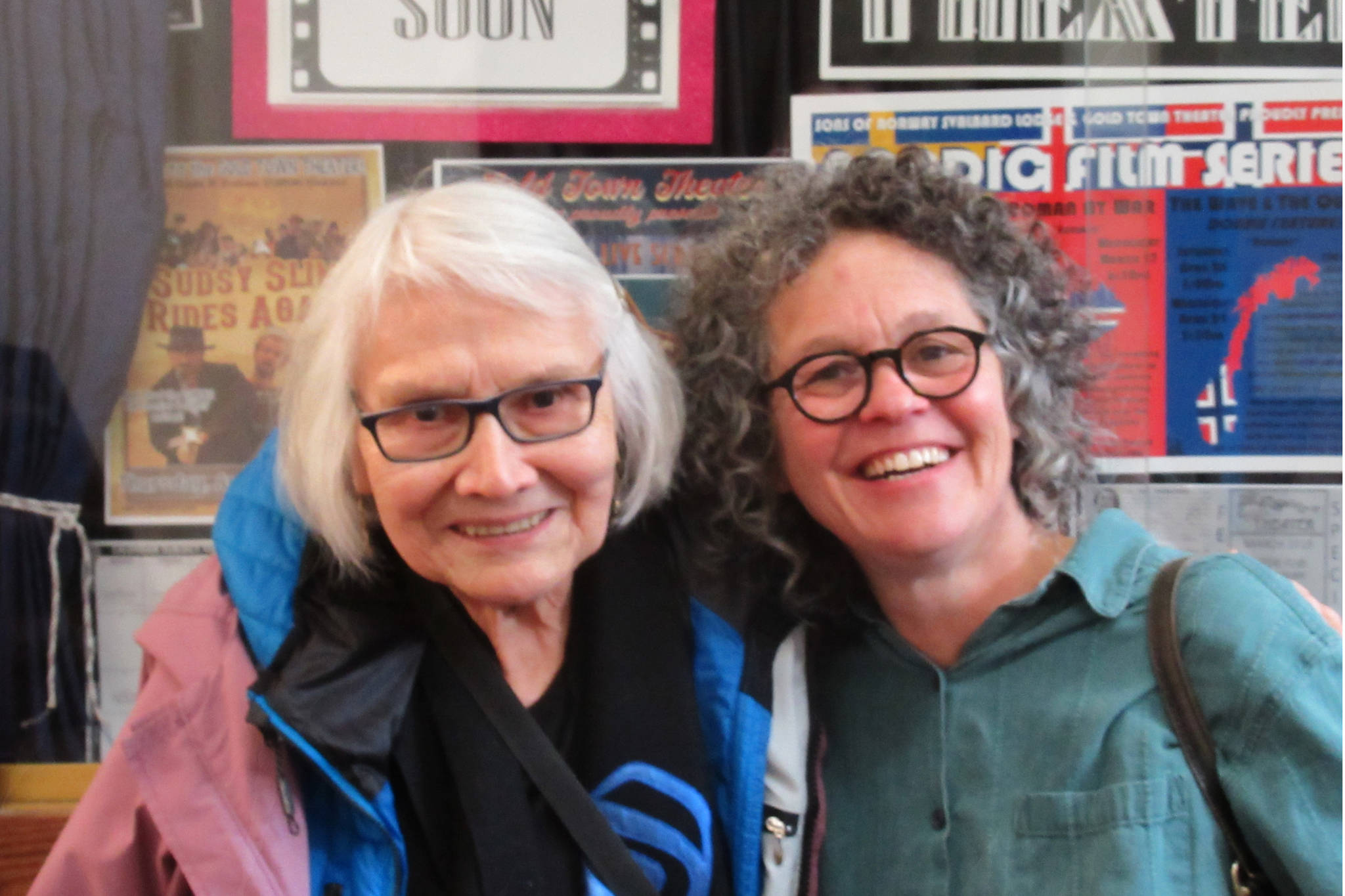Luck played a role in Delores Churchill becoming both a renowned weaver and a generous repository of weaving knowledge.
After a Sunday screening of “Tracing Roots,” a film about the master Haida weaver and her quest to learn more about a centuries-old hat, Churchill spoke about the circumstances that led to her decades-long infatuation with weaving and effort to perpetuate the endangered Alaska Native art form.
“There are many things that happened in my life right at the right time to make sure weaving could continue be taught,” Churchill said during a 40-minute discussion after a movie screening Sunday at the Gold Town Theater.
While Churchill’s mother, Selina Peratrovich, was an acclaimed weaver and weaving teacher, Churchill didn’t grow up seeing basketry in her future.
“When I went to school in Canada, they told me because I was academically inclined … they told me, ‘You would never be an artist.’ They said, ‘people who are academically inclined will not be artists.’ So, I never really thought about art, and in fact, I’d walk by my mother when she was weaving.”
That indifference meant that when Churchill eventually showed up in a community college classroom for a weaving class taught by her mother, she was initially told by her mother to go home.
However, every student was needed for enrollment, which worked out in Churchill’s favor.
“The head of the art department, he said to her, ‘We need her registration,’ so I really got to stay,” Churchill said.
Later, a random encounter at a speaking event lead Churchill to a discovery that increased the number of people she could teach.
“There was a white woman there, and I was telling her when my mother died, I probably wouldn’t teach basketry anymore because it took so long to prepare the material. I said, ‘It takes us all summer to prepare the material for two classes in the winter because we have to split it by hand, and it just takes a lot of time.’”
The woman suggested using a leather stripper to help make preparing materials easier.
“It really did change the art of basketry,” Churchill said. “I don’t think people would have learned as fast as you could using that (leather) stripper, which strips the weavers and warp to the right size, so you can use it for weaving.”
Thanks to those events, Churchill is a veritable Rosetta Stone of indigenous weaving and knows the styles of Tsimshian, Tlingit and Haida weavers among others.
Those insights were at the center of the film made by Ellen Frankenstein showed at the Gold Town Theater. “Tracing Roots” tells the story of Churchill’s attempts to see the hat found with the body of Kwäday Dän Ts’ìnchi, also known as the Long Ago Man or Canadian Ice Man.
Churchill was interested in determining if the man’s heritage could be discerned from the characteristics of the hat.
Ultimately, she was able to see the hat and photograph it, but it could only be shown in the movie in the form of sketches.
Churchill found stylistic indications that left the cultural identity of the man, who died about 300 years ago, uncertain.
In a few centuries, Churchill said there probably won’t be similar questions on the lips of whoever might happen upon her work.
“I think everything I’ve done is so well documented, I don’t think anyone will have a problem,” Churchill said.

